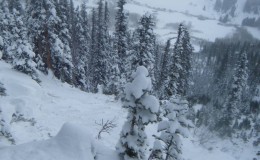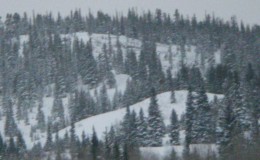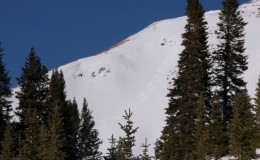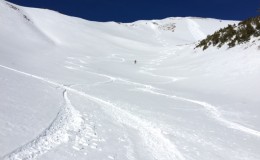Location: Paradise Divide Area
Date of Observation: 11/25/2014
Elevation: 9,300-11,300
Weather: On and off snow showers producing about 3” of new snow between 9:30am and 3pm. Obscured sky throughout the day with strong enough NW wind to refill some tracks throughout the day but not strong enough to notice the blowing snow.
Snowpack: Snowpack: Found some wind stiffened snow but didn’t find a wind slab problem on the NE terrain at ridgeline. So the take home observations were, where in the terrain traveled was the persistent slab active? The snowpack needed to be deep enough to have a strong enough mid-pack to produce propagating test results. The mid-pack that has any strength is the 11/13 to 11/15 storm sitting over weak facets from earlier this season. This set up can be found down to 9,000ft west of Crested Butte. In this area, about 10,800ft seems to be the elevation where this mid-pack starts gaining enough strength to produce propagating results in snowpack tests that represent the potential for a persistent slab avalanche. Below that average 10,800 elevation on NE aspects the midpack could collapse and would only produce very small radius cracks, or ECTX test results. Above that elevation a pit dug with a 115cm snowpack and 4f-1f mid-pack produced an ECT21 SC and produced other collapses while touring with large radius shooting cracks. Thus, representing areas that could produce a persistent slab avalanche given the right slope angle and terrain feature.










